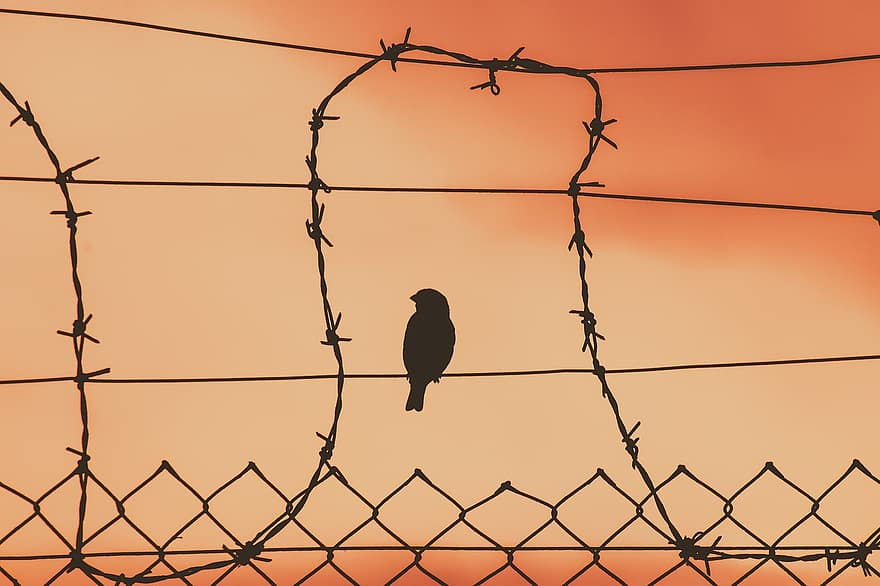Exploring the Prison Abolition Movement

Before the pandemic captured our global attention, I was asked to serve as a reader for the senior honors thesis of a Bellarmine University student named Jillian. I was asked because I had taught as an adjunct professor for many years and the student’s topic involved the criminal justice and corrections system in Kentucky, subjects about which I am very familiar. Jillian’s interest in this area arose from many different experiences she had, but most particularly from an invitational trip she took to observe what life is like in one of Kentucky’s reformatories. What struck Jillian was the subpar treatment of aging residents, many of whom had significant health problems. This, along with her interest in applying to law school, led to her senior honors thesis, “Growing Old and Getting Sick are Dangerous in Prison: A Moral and Legal Argument for ‘Justice, Not Vengeance.’”
Jillian is a bright, articulate young woman who will be a credit to the legal profession. I learned a lot from her. As the process proceeded and I critiqued her research and writing, the Coronavirus pandemic swept across the world. Jillian’s paper focused a bright light upon the inhumane treatment to which so many older residents of prisons and correctional institutions were subjected and the concurrent cost of their incarceration. One could read Jillian’s paper and wonder, what in the world are we doing housing these elderly and infirm people in aging and ill-equipped prisons? We aren’t taking proper care of them.
However, what was even more chilling were the reports coming out of our prisons and jails regarding the inability to contain the COVID-19 virus and protect those who were incarcerated. These isolated and confined spaces were breeding grounds for this deadly virus which affected both the residents and those employed to manage and care for them. Our prison and jail systems were already overcrowded and populated with a disproportionate number of people of color. Now, a highly contagious virus is added to the cocktail of this already dysfunctional system of retributive justice, and what is shaken up and poured out is a disgraceful compound of cruel and unusual punishment.
Our present criminal justice system is not working properly. Many of our jails are filled with poor people who are awaiting their day in court behind bars because they cannot afford the bail posted by the court. Innocent until proven guilty, these pretrial detainees remain in locked cages, now exposed to a virus running rampant. Overcrowded jails can be very dangerous places. Our prisons are occupied by a significant number of people who have been returned for a parole violation (e.g., failing to report to a parole officer on time or relapsing and failing a drug test). Others are there because of behavior related to their addictions or mental illnesses. Then, there are immigration detention centers where individuals seeking a better life for themselves and their families—in the land of the free and the home of the brave—are confined in deplorable conditions. The COVID-19 virus visits there, too. Do all of these people really need to be locked in cages and warehoused?
So, we know this is a broken system and the COVID-19 virus highlights the problems and dangers of a system that is ill-equipped to serve the needs of those with serious health issues, especially those who are older. But what is the answer? What are the alternatives? This correction system has been embedded in our justice system since it began. Punishment has always partnered with the penal system.
I have been intrigued for a while by the prison abolition movement. Wikipedia defines the movement as “a network of groups and activists that seek to reduce or eliminate prisons and the prison system, and replace them with systems of rehabilitation that do not place a focus on punishment and government institutionalization.” It seems the prison abolition movement purists see the amount of money spent in corrections as a resource that could be better applied to developing the infrastructure of American culture that would deter much of the behavior leading people to incarceration. In their article, The Case for Abolition, Ruth Wilson Gilmore and James Kilgore, write: “[J]ail expansion has been chugging along largely because law enforcement continues to absorb social welfare work—mental and physical health, education, family unification. To imagine a world without prison and jails is to imagine a world in which social welfare is a right, not a luxury.”
This article points out that any alternative to incarceration needs to address the full context of the problem which includes taxation, housing, health care, education, transportation, immigration, and other policies. For the U.S. to move toward a better system requires a serious societal overhaul that is more than simply shuttering unsafe and overcrowded jails, like those on Riker’s Island and other prisons.
It’s complicated. Yet, as people of faith, we have the capacity and the calling to address these complex social problems. We have a Savior who insists that we work to create a better, more just and equitable world. The NBA is interested in such work. That’s why the NBA will be hosting a webinar on Thursday, July 16, focusing on the prison abolition movement. I hope you are able to attend the webinar and hear from our special guest, Dr. Jason M. Williams, Assistant Professor of Justice Studies at Montclair State University. In the meantime, I encourage you to learn more about by reading pertinent articles compiled by The Marshall Project.
As I used to tell my students in a class I taught about Christianity and Social Justice, learning about a social problem is a critical first step. However, it is meaningless unless the next steps taken are actionable. Learning more about the prison abolition movement begins the journey that hopefully inspires us, as the church, to lead acts of meaningful reform and restorative justice. I suspect Jillian will be right in the mix of such change.